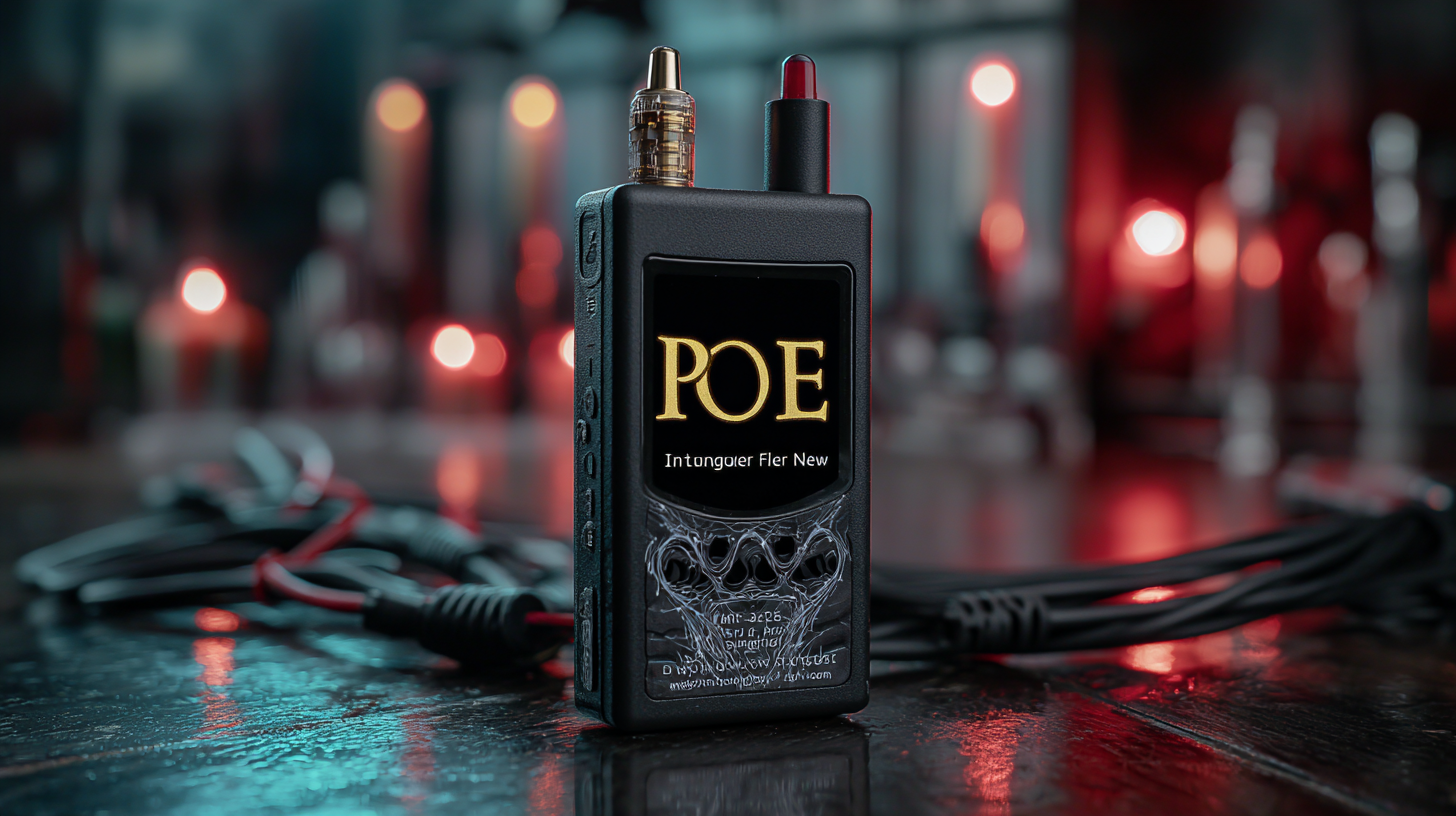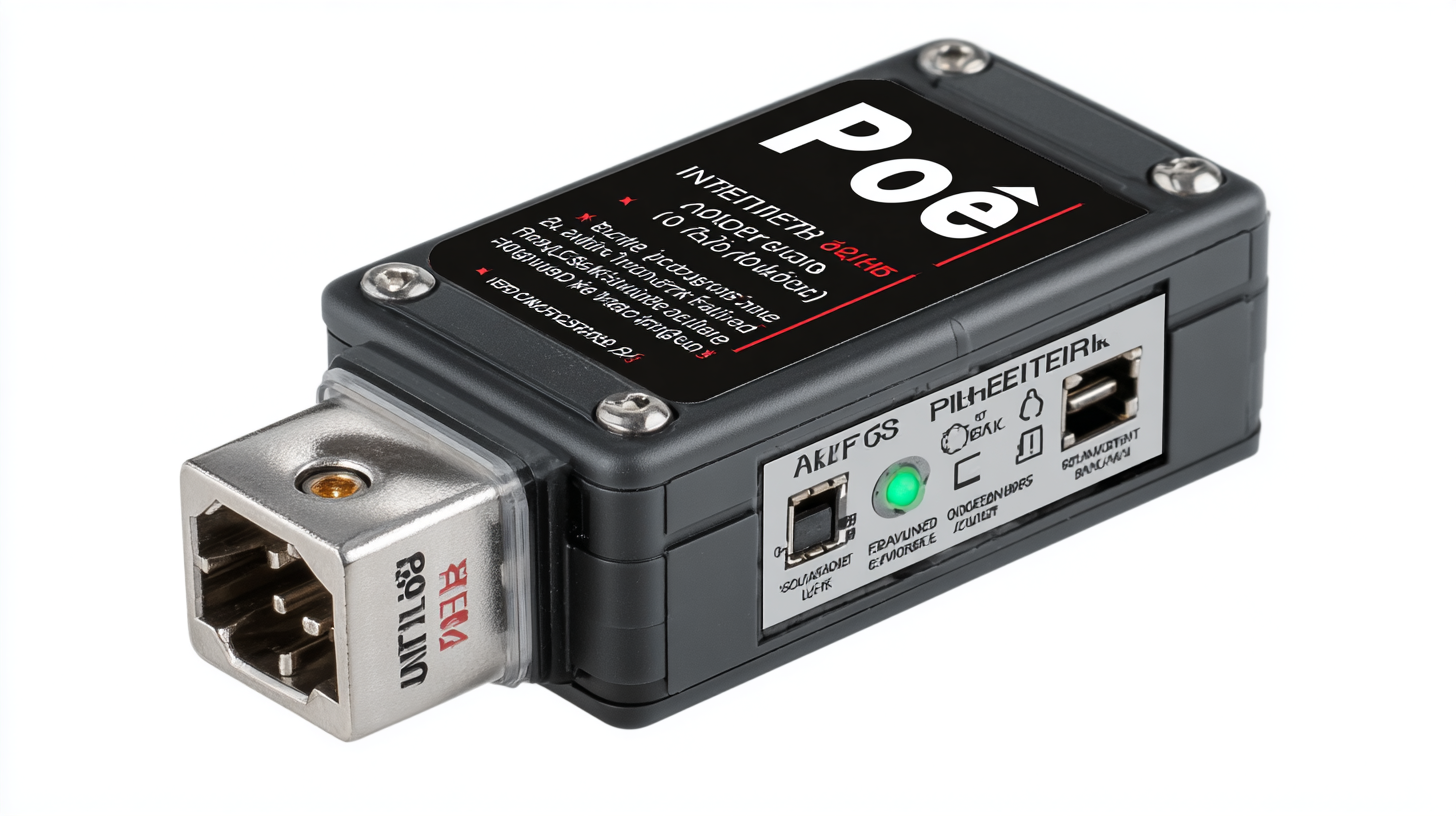
- [email protected]
- Mon - Sat at 7:00AM to 9:00PM
Leave Your Message

In today's rapidly evolving technological landscape, the demand for efficient power solutions is paramount, especially when it comes to powering network devices. A Power over Ethernet (PoE) injector plays a crucial role in simplifying installations by delivering both data and power through a single cable, thereby reducing clutter and streamlining network functionality. As we look ahead to 2025, market analysis reveals a significant growth trajectory for PoE technology, driven by the proliferation of IoT devices and smart technologies. This guide aims to equip you with comprehensive insights on selecting the best PoE injector tailored to your network needs. Whether you are setting up an office, enhancing an existing infrastructure, or integrating advanced systems, understanding the diverse applications and specific requirements is essential for making an informed decision. Join us as we delve into key considerations, types of PoE injectors available, and their impact on your network's performance and efficiency.

Power over Ethernet (PoE) technology has revolutionized the way we connect and power devices within modern networks. By allowing both data and electrical power to be delivered through a single Ethernet cable, PoE simplifies the setup of devices such as IP cameras, wireless access points, and VoIP phones. This reduces the need for additional wiring, making installation faster and more cost-effective, especially in environments where power outlets are limited.
The advantages of adopting PoE are manifold. It enhances network flexibility and scalability, enabling businesses to easily expand their systems without the overhead of extensive electrical work. Furthermore, PoE provides centralized power management, meaning devices can be remotely powered on or off, which not only optimizes energy consumption but also enhances security by allowing downtime during off-hours. In an era where efficiency and convenience are paramount, understanding the benefits of Power over Ethernet is essential for making informed decisions when setting up or upgrading network infrastructures.
 When selecting a PoE injector, several key factors must be considered to ensure it meets your network needs effectively. First and foremost, compatibility with your devices is critical. Check the power requirements of your PoE-enabled devices and ensure that the injector can provide the necessary wattage. Standard PoE injectors can supply up to 15.4 watts (802.3af), while PoE+ (802.3at) can provide 30 watts, and PoE++ (802.3bt) can go up to 60 or 100 watts. Understanding these specifications will help in choosing an injector that can handle your devices without underpowering them.
When selecting a PoE injector, several key factors must be considered to ensure it meets your network needs effectively. First and foremost, compatibility with your devices is critical. Check the power requirements of your PoE-enabled devices and ensure that the injector can provide the necessary wattage. Standard PoE injectors can supply up to 15.4 watts (802.3af), while PoE+ (802.3at) can provide 30 watts, and PoE++ (802.3bt) can go up to 60 or 100 watts. Understanding these specifications will help in choosing an injector that can handle your devices without underpowering them.
Another essential factor is the injector’s range and distance capabilities. PoE works effectively over a maximum distance of 100 meters, but the quality of the Ethernet cable and the environment can impact performance. Look for injectors that maintain signal integrity over longer distances, especially if you plan to deploy devices far from your power source. Additionally, consider features like surge protection, reliability under different conditions, and ease of installation. Selecting an injector with these features will not only enhance network performance but also ensure a secure and stable connection for all your devices.
When it comes to powering your network devices, understanding the difference between passive and active Power over Ethernet (PoE) injectors is crucial. Passive PoE injectors deliver a constant current regardless of the end device's requirements. This means they can be simpler and often less expensive, making them a popular choice for basic setups. However, the downside is that they can inadvertently supply too much power, potentially damaging more sensitive equipment that doesn’t need such forceful input.
On the other hand, active PoE injectors automatically negotiate the power requirements with the connected devices, ensuring that they only supply the voltage and current that each device requires. This adaptability makes active solutions more suitable for complex networks where different devices have varying power needs. Although they tend to have a higher price point, the added protection they offer can prevent costly equipment failures and enhance overall network reliability. Ultimately, choosing between passive and active PoE injectors will depend on your specific needs, budget, and the complexity of your network setup.
| Injector Type | Power Output | Range | Compatibility | Typical Use Case |
|---|---|---|---|---|
| Passive PoE Injector | Up to 15.4W | Up to 100 meters | Devices that accept passive PoE | Basic IP cameras, Access Points |
| Active PoE Injector | 15.4W, 30W, 60W options | Up to 100 meters | 802.3af, 802.3at, 802.3bt devices | High-powered devices, IP phones, advanced cameras |
| Smart PoE Injector | Variable (depends on detected device) | Up to 100 meters | Multiple standard devices | Smart networks, managed environments |
| Midspan PoE Injector | 15.4W to 60W options | Up to 100 meters | Works with existing switches | Expanding networks without replacing switches |
When selecting a Power over Ethernet (PoE) injector, ensuring compatibility with your devices is paramount. Just as FuelTech has developed its new high-impedance fuel injectors to work seamlessly with various engine configurations, you must ensure that your PoE injector can support the power requirements of your specific network devices. Each device, whether it’s an IP camera, a wireless access point, or a VoIP phone, has its own power needs, typically ranging from 15.4W to 30W for PoE devices. Therefore, before making a purchase, it’s crucial to verify the specifications of your devices and match them accordingly to the injector’s output capabilities.
In addition to power requirements, considering the type of PoE standard is also essential. Like the flexibility offered by the new injectors, PoE technology features multiple standards such as IEEE 802.3af, 802.3at, and the more recent 802.3bt, which provide varying levels of power. Ensuring your injector supports the appropriate standard for your devices not only guarantees functionality but also enhances overall network performance. Investing time in aligning your PoE injector with your device specifications will lead to a more reliable and efficient network setup, much like a well-tuned engine operates at its best when equipped with the right injectors.

When selecting a Power over Ethernet (PoE) injector for your network, understanding the offerings of trusted manufacturers can significantly impact your decision. Companies like TP-Link and Netgear are industry leaders, known for their reliability and performance. According to a recent report by MarketsandMarkets, the PoE injector market is projected to grow by 14.3% annually, driven largely by the increasing demand for IP cameras and wireless access points. These manufacturers provide injectors that comply with IEEE 802.3 standards, ensuring compatibility with a variety of devices.
Another reputable player, Cisco, offers unique PoE injectors equipped with advanced features like intelligent PoE management and energy efficiency metrics. Their solutions not only meet the needs of small businesses but also scale effectively for larger enterprises. A study from ResearchAndMarkets highlighted that energy-efficient PoE injectors can reduce power consumption by up to 30%, which translates to lower operational costs in long-term deployments. Choosing from these top manufacturers guarantees not only quality and efficiency but also contributes to a more sustainable network infrastructure.